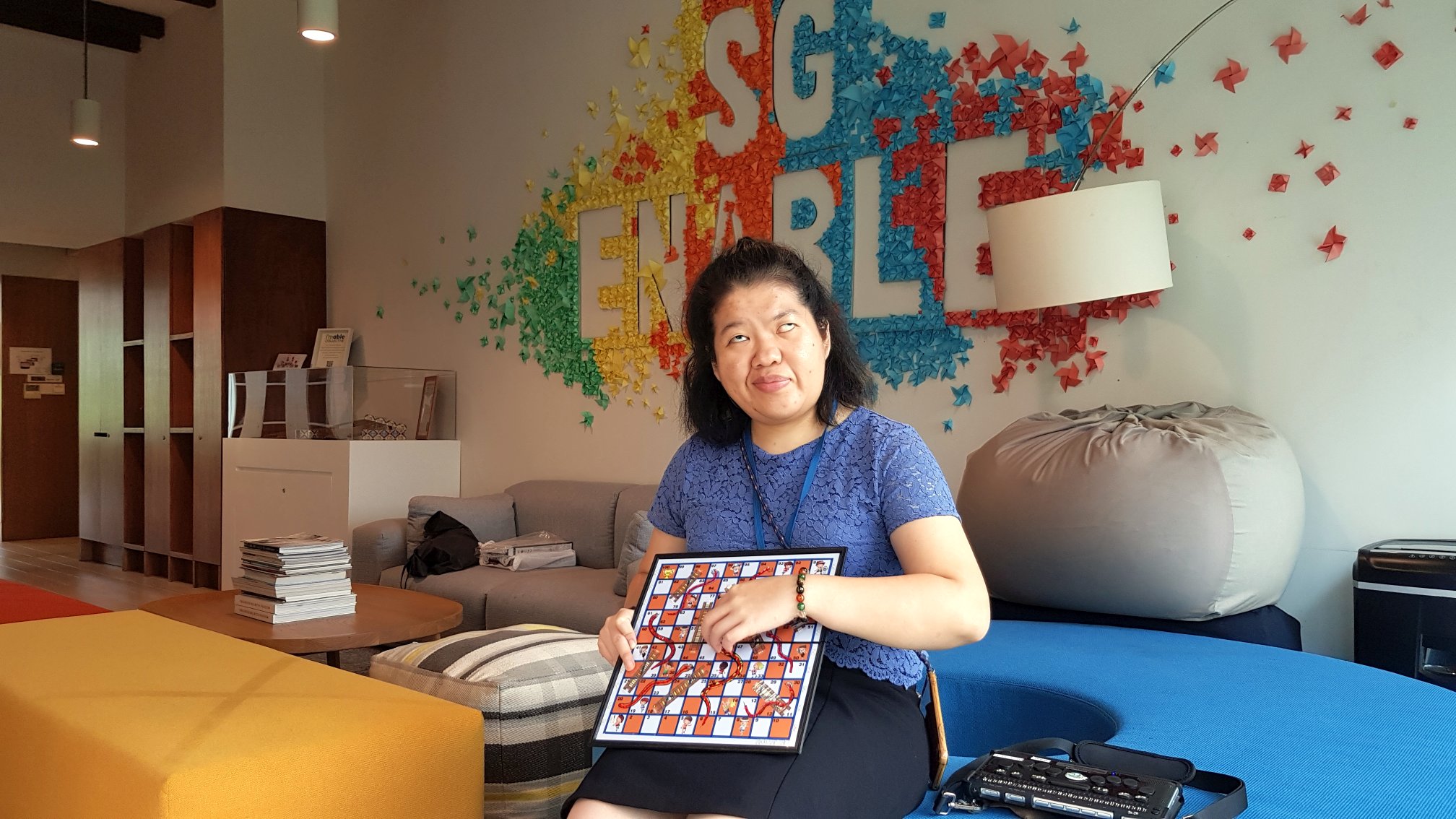
Siew Ling posing with the adapted Snakes and Ladders Game.
This is the third article in the “Project Adaptive Fun” series in which Siew Ling, who is deaf-blind, shares the simple adaptations she and her team have made to increase the accessibility of games! Check out the first two articles here.
As a child growing up in a time when we did not have computers and other technologies, card and board games were our forms of entertainment. In my house, I had a Snakes and Ladders board game.
When I felt like it, I would take it out to play, and if my brother did not want to play with me (he preferred playing football), I would pretend it was a multi-player game and move the various counters around the board, up the ladder, down the snake and see which counter reaches the last square. It was simple fun back in those days.
Since Snakes and Ladders can be played and enjoyed by people of all ages, my colleague decided to try making adaptations to the game to make it accessible for persons with visual impairment.
It was difficult to do so because there were many squares to mark out, and many images of snakes and ladders on the board had to be made tactile. There was also a need to distinguish the squares and the ladders because they are all made up of straight lines. Whiteboard line tape, which comes in thin strips, was used to mark the grids and folded to mark the curvy images of snakes. Clear adhesive tape, which is wider, was then used to mark the images of the ladders.
-20220616_145426-(cropped)-(3_2)-ok.jpg?sfvrsn=5a9943bb_1)
The Snakes and Ladders game has been adapted through the use of everyday items like whiteboard line tape and clear adhesive tape.
Of course, we still needed the 6dot Braille Label Maker to mark the top and bottom of the board with embossed braille labels so that players with visual impairment could know easily whether to move their counters left or right after throwing a die. To keep track of the position of their counters, players with visual impairment can count the rows and columns of the board. An embossed braille label with a single dot was also added to indicate the head of each snake's image for easy recognition. It helps that the die that comes with this board game is already tactile, with prominent indented dots on it.
To differentiate each player’s counter, magnets of different shapes and sizes can be used as counters for the game. If the counters are similar and have a flat surface, braille labels or tactile stickers can be pasted onto the counters to distinguish them as well.
With the many elements that had to be made accessible for this game, the adaptation took several hours and required more focus and patience. It was a test of our creativity as we used everyday items like tape to make these adaptations.
What a pretty artwork it turned out, thanks to these modifications, I was able to enjoy a little play time with this game!
Tan Siew Ling is fully Deafblind, having lost both her sight and hearing to a neurological condition, Neurofibromatosis type 2 (NF2). She carries a screen reader with a Braille display, which she fondly names “Bear Bear”, everywhere she goes. Her humour, wordplay, and love of puns keep friends on their toes. She enjoys reading books in her free time and loves to pen down her thoughts, often on a whim, which can be entertaining at times, on her social media. When she is not writing or reading, she can be seen doing insane 72kg leg presses or swinging a 20kg kettlebell to and fro. You can find out more about Siew Ling and her journey here.